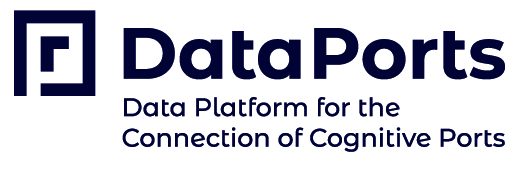From January 2021, the following papers have been published:
Nikolakopoulos, A.; Marinakis, A.; Moulos, V. and Varvarigou, T. (2021). “Hoplite Antivirus for Adversarial Attacks: A Theoretical Approach”. In Proceedings of the 17th International Conference on Web Information Systems and Technologies – DMMLACS, ISBN 978-989-758-536-4; ISSN 2184-3252, pages 585-592.
The paper summarizes the existing (and most well-known) adversarial attacks & defenses. Then, it proposes a potential solution to the issue, with a theoretical approach of an antivirus software scenario, the Hoplite Antivirus. This approach could be a vital step towards addressing the constantly evolving adversarial attacks, taking a note from the way software scientists have defended (and keep defending) against computer viruses. Countering adversarial attacks could contribute to a drastically better & safer function of deep neural networks and machine learning algorithms. DataPorts’ ML implementations could benefit by Hoplite, which could prove to forge them against any attackers. Therefore, data quality, security and integrity are assured, even in the stage of machine learning processing tasks.
Peldszus S., Bürger J., Kehrer T., Jürjens J. “Ontology-driven evolution of software security”. Data & Knowledge Engineering, Volume 134, July 2021, 101907.
In the course of the DataPorts project, an ontology has to be developed to formally specify the knowledge of ports domain. As discussed in this journal article, such knowledge domains are subject to continuous change, especially concerning the security requirements. The article provides a solution to consistently support the evolution of ontologies.
Metzger A., Franke J., Jansen T. “Ensemble Deep Learning for Proactive Terminal Process Management at duisport”, in Business Process Management Cases – Volume 2, J. vom Brocke, J. Mendling, and M. Rosemann, Eds. Springer, 2021.
This book chapter describes a use case of the application of advanced data analytics in decision support in the context of port terminal management. The use case presented in this book chapter shows how the use of Big Data and Deep Learning services could increase the productivity of the terminals.
Curry E., Metzger A., Berre A.J., Monzón A., Boggio-Marzet A. (2021) “A Reference Model for Big Data Technologies”, in Curry E., Metzger A., Zillner S., Pazzaglia JC., García Robles A. (eds) “The Elements of Big Data Value”. Springer, Cham.
This book chapter presents a reference model for Big Data technologies, named the Big Data Value (BDV) Reference Model, which addresses the main technical aspects in Big Data systems and aims to provide a common reference framework to place the Big Data technologies in the IT stack.
Palaiogeorgou P., Gizelis C.A., Misargopoulos A., Nikolopoulos-Gkamatsis F., Kefalogiannis M., Christonasis A.M. (2021) “AI: Opportunities and Challenges – The Optimal Exploitation of (Telecom) Corporate Data”, in Dennehy D., Griva A., Pouloudi N., Dwivedi Y.K., Pappas I., Mäntymäki M. (eds) “Responsible AI and Analytics for an Ethical and Inclusive Digitized Society”. I3E 2021. Lecture Notes in Computer Science, vol 12896. Springer, Cham.
This conference paper analyzes the opportunities and challenges presented by the adoption of Artificial Intelligence in the Telecommunication industry. Those opportunities and challenges are presented through several use cases regarding digital transformation and the exploitation of the data handled by telecommunication organizations.
